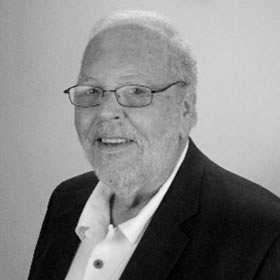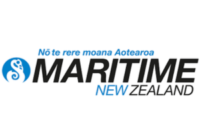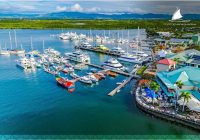Diurnal Emissions – Part 2
By George B. Bellwoar
As mentioned Part 1 of this story, there are numerous benefits to adding a diurnal emissions control fuel system to gasoline-powered boats. But how do these systems work?
Today’s two most popular diurnal emissions control systems are pressurized systems and canister (often called atmospheric) systems. Pressurized systems prevent outward venting until internal system pressure exceeds roughly 1.25 psi. This usually happens only with significant temperature swings.
Canister systems operate at atmospheric pressure. Certified carbon canisters in the vent line capture hydrocarbons from venting vapors during the day and expel them back into the tank at night when cool air causes the system to breathe in. Most automobiles use a complex version of the marine canister system.
Both systems need airspace (or ullage) at the top of the tank to ensure that a gas (air or vapor) will be vented, not liquid fuel. Both systems can (and usually do) use the same approach to creating that ullage. Typically, they use three different mechanical control valves.
- Fill Limit Valves (FLVV) – These valves control the ullage volume. A large 5/8″ (16mm) vent allows a high volume of vapor to pass through during refueling.
- Tank Vent Valves (TVV) – These are also called Rollover Valves (ROV) or Grade Valves (GRV), depending on the manufacturer. They have a much smaller 5/16″ (8mm) vent size and control venting anytime the FLVV is closed. Diurnal venting often passes through TVVs.
- Inlet Check Valves (ICV) – ICVs are usually mounted in the fill hose and prevent fuel from coming out of the fuel fill if the tank “burps” immediately after the FLVV closes. ICVs prevent wellback.
Systems typically have one FLVV, one or two TVVs, and one ICV. Variations exist depending on the size and shape of the tank and the overall system design. During refueling, incoming fuel hits the ICV and opens it. An FLVV vents the high volume of refueling vapor until the fuel level in the tank reaches and closes it. Tank pressure then spikes as fuel comes in, but no air leaves. This closes the ICV, fuel backs up the fill hose, and shuts off the pump. Then, the TVVs slowly vent the tank pressure. As it drops, the ICV opens, and the fuel in the fill hose drains into the tank. When someone rounds off the cost by clicking the pump several times, they repeatedly refill and empty the fill hose into the tank. If someone does this long enough, they will reduce the airspace and eventually defeat the system. Hence the warning on cars and pumps not to overfill.
The fuel cap is another critical component in these systems. It seals when closed and “clicks” like your car’s. Caps used in pressurized systems have built-in pressure and vacuum relief valves, usually the only system vents. Caps used in canister systems often have the same built-in pressure and vacuum relief valves. But these are used as a system failsafe or for additional makeup air when high horsepower engines run flat out. Actual venting in canister systems is often via a conventional vent on the side of the hull.
In simple terms, that is how these systems work.
While these are the two most common approaches, other unique ways to control diurnal emissions are available. Enviro-Fil systems use a venturi effect rather than a pressure spike to shut off the pump. And Perko also offers a system to control emissions without any tank-mounted valves. There are options to fit every application. System integrators like Perko and Attwood help fuel tank manufacturers and boat builders to determine and then design the system that best fits the need of every boat model.
George B. Bellwoar

Working in the marine industry for 40 years, George’s background includes non-ferrous alloys for military marine applications (Ampco Metals), marine switches and locks (General Automotive, now part of Dometic), lighting, deck and underwater hardware (Wilcox Crittenden and Perko), and commercial boat navigation, searchlights, and gasoline fuel systems (Perko).
He has worked with OEMs, boat builders, and distributors throughout North America and Europe, and has extensive experience in component part sales, use, and installation. George is an expert in navigation lighting, marine fuel systems, diurnal emission systems.
George has served on numerous National Marine Manufacturers Association (NMMA) committees including Education and Discover Boating. He was the primary author of the NMMA’s Best Practices Manual for Supply Chain Management. He has also served on numerous American Boat and Yacht Council (ABYC) technical committees including navigation lighting and fuel systems.
George is a past Chairman of the Boards of both the NMMA and the ABYC, where he has received numerous leadership awards. He has a BA from LaSalle University and an MBA from Drexel University, both in Philadelphia, PA. He holds an SCPro I certification from the Council of Supply Chain Management Professionals (CSCMP) and teaches Supply Chain Management, Customer Service Management and Procurement Management part-time at a college in Florida.
George is based in United States and Canada. Those wishing to contact George can do so on +1 954 646 5920 or
shing to contact GMBA in Australia can do so through MaryAnne Edwards or call +61 412 916 036
Global Marine Business Advisors and its associated website www.gmba.blue are not registered legal entities. GMBA is a network of independent marine industry advisors.









